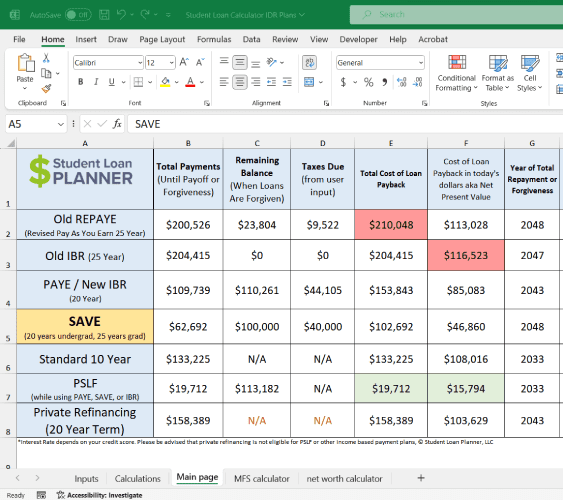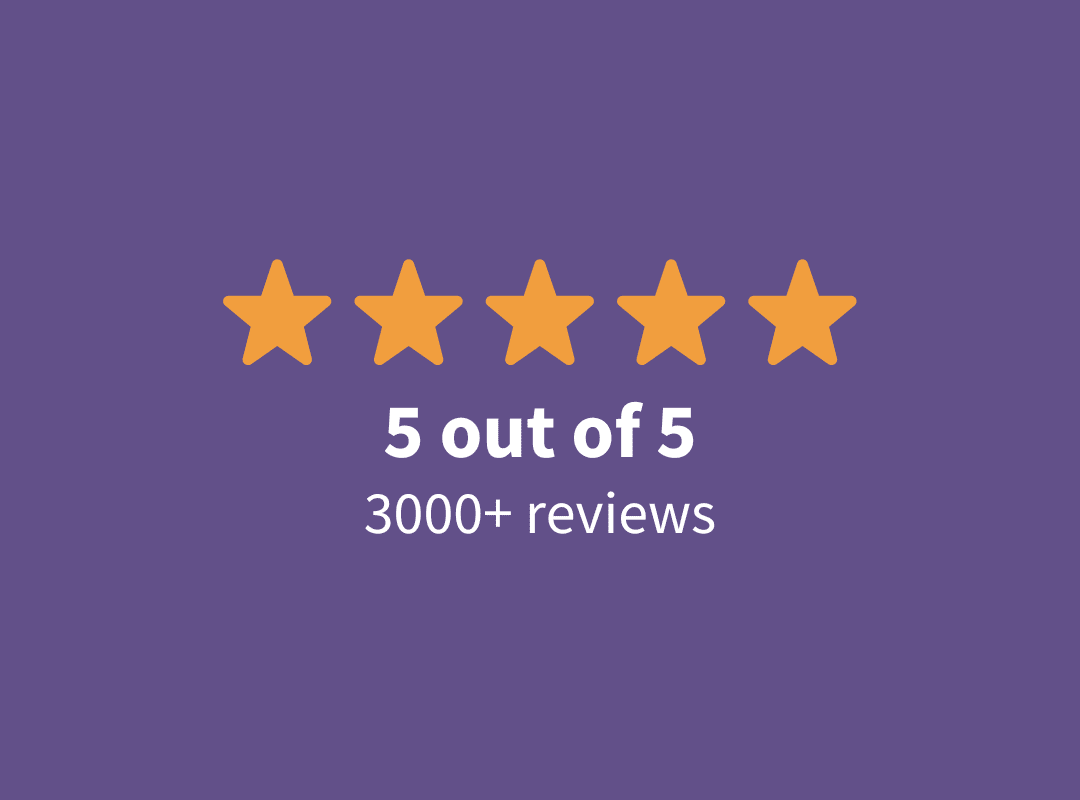
If you’re looking for student loan forgiveness, you might already know about the Public Service Loan Forgiveness program (PSLF) or options available through an income-driven repayment plan (IDR). Under PSLF and IDR you can reduce monthly payments and eventually get federal student loan forgiveness (unfortunately, private student loans don't qualify). But if you dig a little deeper, you'll find even more student loan forgiveness programs by state.
Every state can offer student loan forgiveness options for residents, though eligibility may vary by field. If you’re looking for state assistance for student debt that is under the radar, we’ve put together our ranking of the best nine student loan forgiveness programs by state you might not know about.
Top 9 unknown state loan forgiveness programs by state
Different states have varying budgets allocated to student loan repayment assistance and forgiveness. But certain states offer considerable award amounts if you’re eligible. Here are the hidden gems of state-based student loan forgiveness programs that are available.
9. Hawaii
The Hawaii State Loan Repayment Assistance Program is available to a variety of healthcare professionals who work in qualified shortage areas for two years. The amount awarded to borrowers depends on funding. Apply for this program through the Hawaii/Pacific Basin Area Health Education Center to see if you can get some loan cancellation on your remaining balance.
8. Arkansas
There are two student loan repayment assistance programs in Arkansas that can help with your education loans.
Loan repayment program for out-of-state veterinary medical education. The first option is a program that’s in partnership with Mississippi State University College of Veterinary Medicine. Applicants must engage in food supply veterinary medicine for five years in Arkansas.
State Teacher Education Program. The second option provides up to $3,000 each year for teachers who work in a public school in a designated shortage area or teach in a subject matter deemed in critical shortage. Repayment assistance is available for up to three years.
7. Georgia
Physicians and dentists in Georgia could be eligible for student loan repayment assistance through a Georgia Board for Physician Workforce loan repayment program. While there are other federal programs that can help with your loan balance, the state of Georgia offers:
- The Physicians for Rural Areas Assistance Program (PRAA)
- The Georgia Physician Loan Repayment Program (GPLRP)
- The Dentists for Rural Areas Assistance Program (DRAA)
- The Physician Assistant Loan Repayment Program (PALRP)
- The Advanced Practice Registered Nurse Loan Repayment Program (APRNLRP)
Awards vary by program but range from $10,000 to $25,000 per year. Contracts are made one year at a time with eligibility for renewal. You can find additional program information and applications through the Georgia Board for Physician Workforce site.
Get Started With Our New IDR Calculator

6. Kansas
The state of Kansas offers a few notable student loan repayment programs that may be useful to those in a medical profession or who are interested in building a life in a rural or high-need part of the state.
The Kansas State Loan Repayment Program. This program is designed to recruit medical professionals to serve in designated shortage areas. Award amounts vary over five years, depending on your profession, and are as follows:
- First two years: up to $20,000 to $25,000
- Year 3: $15,000 to $20,000
- Year 4: $10,000 to $15,000
- Year 5: $5,000 to $10,000
To be eligible, you must be operating within the Medicare, Medicaid/ KanCare programs, and have an active and qualifying license, or certification to practice.
The Kansas Bridging Plan. In partnership with the University of Kansas Medical Center, this program offers loan forgiveness to primary care and psychiatry residents. To encourage you to continue practicing in Kansas after completing your residency, applicants can receive up to $26,000 for a three-year service in a qualified area.
Kansas Rural Opportunity Zones program. Through this program, applicants can get up to $15,000 in student loan repayment assistance over a period of five years. This is an incentive for workers to live in one of the 77 counties that qualify for this program. In order to qualify, you must have a sponsor and show proof of residency.
5. Minnesota
Minnesota is where you want to be if you’re looking for state assistance for student loan borrowers. The state offers an abundance of forgiveness programs.
Minnesota State Loan Repayment Program
Under the Minnesota State Loan Repayment Program, qualified health professionals can receive up to $20,000 per year over a period of two years in exchange for a service obligation. According to the program’s website, the following professions are eligible:
- Primary Care Physicians (MD or DO)
- Dentists
- Dental Hygienists
- Certified Nurse Midwives
- Nurse Practitioners
- Physician Assistants
- Clinical Psychologists
- Licensed Independent Clinical Social Workers
- Psychiatrists
- Licensed Professional Clinical Counselors
- Psychiatric Nurse Specialists
- Marriage & Family Therapists
Minnesota Rural Physician Loan Forgiveness program
The Minnesota Rural Physician Loan Forgiveness program offers a bit more money, but also has a longer period of time for the service requirement. Under this program, you can get up to $25,000 per year in loan forgiveness but must serve for at least three years in a rural community.
The specific professions that qualify include:
- Pediatric
- Family Practice
- Internal Medicine
- Psychiatric
- OB/GYN programs
- Licensed physicians
You must work a minimum of 30 hours per week and at least 45 weeks per year to qualify.
Minnesota Nurse in Long Term Care Forgiveness program
If you’re a nurse and work in a nursing home, you could qualify for the Minnesota Nurse in Long Term Care Forgiveness program. Under this program, you could qualify for $5,000 per year with a two-year service commitment. Qualified candidates have the option to extend the service for another two years.
According to their website, students in Registered Nurses (RN) and Licensed Practical Nurses (LPN) programs, or licensed RN/LPN qualify for this program. Other eligibility requirements may apply.
Minnesota Rural Advanced Practice Provider Loan Forgiveness
There’s also the Minnesota Rural Advanced Practice Provider Loan Forgiveness program which offers up to $12,000 per year to healthcare professionals who serve a minimum of three years in a rural area.
According to their website, students in Nurse Practitioner (NP), Physician Assistant (PA), Certified Nurse Midwives (CNM), Nurse Anesthetist and Advanced Clinical Nurse Specialists (CNS) Programs, or licensed in NP, PA, CNM, Nurse Anesthetist and Advanced CNS qualify for the program.
Minnesota Dentist Loan Forgiveness program
Dentists in Minnesota can also take advantage of state assistance for student loans. Under the Minnesota Dentist Loan Forgiveness program, dentists who have at least 25% of patient visits coming from public programs or are on a sliding scale fee can get up to $30,000 in student loan repayment assistance. Qualified dentists must serve a minimum of three years. Dentists, as well as dental students and dentists in residents, may qualify.
Minnesota also offers state assistance for student loans for veterinarians, mental health and allied healthcare professionals.
You can find more information on any of these programs by visiting the Minnesota Office of Higher Education website*.
*Specific program web pages were down at the time of publishing.
4. Alaska
Alaska’s SHARP program offers a variety of healthcare professionals loan forgiveness options in exchange for a service commitment. In order to qualify, you need to work in a Health Professional Shortage Area (HPSA).
Tier 1 level employees, like dentists and primary care physicians, can get up to $35,000 per year in loan forgiveness. In instances where there’s a very difficult position to fill, this award jumps to $47,000.
Tier 2 employees, like nurses and counselors, can get up to $20,000 per year. Difficult to fill positions earn up to $27,000 per year. If you have questions about the program, you can learn more here.
3. Indiana
The Richard M. Givan Loan Repayment Assistance Program (LRAP) is geared toward lawyers in Indiana working in civil legal aid. This program is available to active Indiana State Bar Association members and offers up to $5,000 per year in debt relief to eligible applicants. Applicants must work for a qualified organization like a nonprofit working with low-income communities (or similar public service jobs) and make $50,000 or less. For more information, reach out to the Indiana Bar Foundation.
2. Iowa
The state of Iowa offers a couple of notable, but likely lesser-known, programs worth looking into.
Teach Iowa Scholar Program. This program offers teachers up to $4,000 per year for up to five years, in exchange for working in an underserved area. You must be licensed and have a corresponding endorsement for the area that you teach in. See the Iowa College Aid site for more information and how to apply.
Rural Iowa Primary Care Loan Repayment Program. The program offers up to $200,000 (paid at $40,000 over five years of service) to doctors in shortage areas in rural communities. Applicants must work for five years and be licensed, working in a qualified area, and attend Des Moines University College of Osteopathic Medicine or the University of Iowa Carver College of Medicine. To qualify, you must be recommended for the program by your college contact. Such a large amount can help you make your loan payments and tackle your debt.
1. Michigan
If you’re a medical, dental or mental health provider in Michigan looking to serve in Health Professional Shortage Areas (HPSAs), you’re in luck. The Michigan State Loan Repayment Program offers up to $200,000 in tax-free money to help with student loan payments.
These funds are awarded to cover student loan debt and are given out over a period of eight years. In exchange, healthcare providers must serve at least two years in an HPSA and work full-time at a qualifying site.
According to the program’s website, the following healthcare providers are eligible for this program:
- Dentists: DDS or DMD
- Physicians: MD or DO (Family Practice, Internal Medicine, OB/GYN, Pediatrics, Geriatrics)
- Physician Assistants (Primary Care, including the same specialties as MDs and DOs)
- Nurse Practitioners (Primary Care, including the same specialties as MDs and DOs)
- Psychiatrists
- Certified Nurse Midwives
- Clinical or Counseling Psychologists (Ph.D./Masters)
- Licensed Professional Counselors (Ph.D./Masters)
- Marriage and Family Therapists (Ph.D./Masters)
- Psychiatric Nurse Specialists (Masters)
- Clinical Social Workers (Masters)
- Mental Health Counselors (Masters)
We’ve included Michigan’s well-known state loan forgiveness program on this list as the award amount is quite generous compared to other state student loan forgiveness programs.
Find state assistance for student loans
Though federal government student loan forgiveness options are more popular, definitely look into the various student loan forgiveness programs by state as well. So if you don't see your state, like Illinois or New York on the list, look into what programs your state may have. The options within each state differ and are often profession-specific programs, but it’s worth exploring cost-saving state assistance for student loans to pay off debt faster.
Do you live in any of these states? Do any of these programs make you feel better about paying back your student loans?
Not sure what to do with your student loans?
Take our 11 question quiz to get a personalized recommendation for 2024 on whether you should pursue PSLF, Biden’s New IDR plan, or refinancing (including the one lender we think could give you the best rate).

I’m curious if you know much about the Pennsylvania SLRP. It seems there generous at 100k for 2 yrs for physicians. I’ve read over the info, but there isn’t a ton of coverage about it, and it almost seems too straight forward. I’m from PA, so I’m curious if it’s a deep bureaucratic mess hidden beneath the seemingly simple facade, or a real option for me.
You should definitely look into it CM. My experience is that these state specific programs don’t get a lot of attention and the folks who take the time to pick up the phone and call the appropriate state agency actually get real live explanations for how things work. I’d encourage you to reach out to them.
Hello,
Are there any forgiveness programs for parents? Parent plus loans? I have been paying on an income-driven plan for seven years and the balance has only grown! It’s now up to $160,000.00. It’s overwhelming. I live in Minnesota, I was excited to see the list but I am not in healthcare and neither is my son.
Thank you,
Jeannie
Hey Jeannie. We have an article on that: https://www.studentloanplanner.com/pay-off-parent-plus-loans/
The crux of the strategy is to focus everything on maximizing your retirement account contributions. Then you need to wait to claim Social Security until 70 (on average). This is because you can often exclude a lot of that income from the student loan payments. Then you basically utilize a long term forgiveness strategy.
I am 66 I presently am being garnished for a student loan. An article sugested ways to reduce payments it said that by reducing my agi I could lower the garnishment. So I increased my 401k by 22%. To my surprise my garnishment increased to 22% also. Tell me how that happened. I dont have a clue on what to do now.HELP
You need to get on a program like REPAYE Frank. You’ll want to call the default resolution group at the Dept of Education. Their number is 800-621-3115. Compare consolidation to rehabilitation. This is only for federal loans. You should be able to pay a lot less than you are currently unless they are parent plus loans, in which case you have to do ICR
I am currently in the REPAYE plan and in the Public Loan Forgiveness program. My salary increased as well as my payment 🙁
My question is…If I put more into my tax shelter, can I have my payment refigured with my new adjusted gross income? AND… will that make a difference in my payment?
If by tax shelter you mean if you put more in pretax retirement accounts then yes itll recalculate if you send in a new tax return proving that
Hello, I have $62,000 (about 90% RN school, 10% from a technical school) in federal student loans which are consolidated. I am wondering what SLRP’s I am most likely to receive since most seem to accept only a few applicants. I am a RN with my bachelors degree and live in Ohio and am willing to relocate to another state if necessary. I most recently have worked as a mental health/behavioral RN for 3.5 years.
PSLF is likely your best bet. If you max your retirement accounts you might be able to pay about 300 a month and have the rest forgiven. You might even have a few years of credit towards the 10 already.